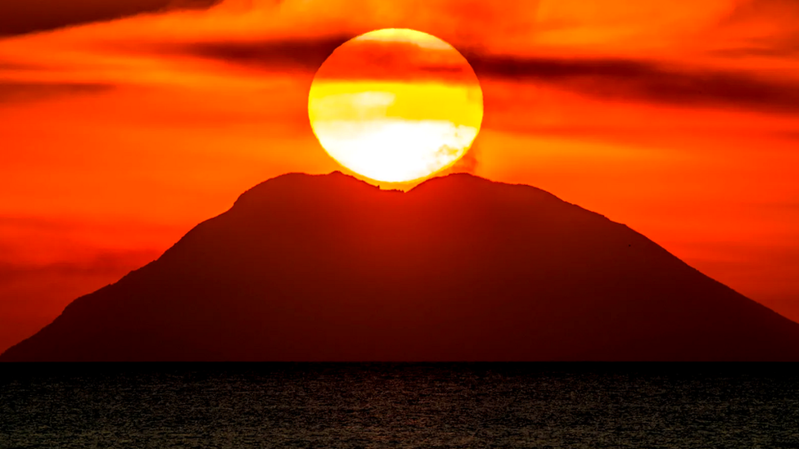
Not all volcanoes rise above the surface so that they can be seen from afar. Many hide under water and only make themselves felt during serious eruptions.
On the southern coast of Italy, at the bottom of the Tyrrhenian Sea, deep under the waves, is the largest active volcano in Europe. The giant breathes menacingly through numerous holes on its underwater slopes, and scientists are trying to figure out what will happen if it erupts. The forecasts are very different – even catastrophic.
At the words “Italian volcanoes” the Sicilian Etna and Vesuvius, which once became the cause of the death of the ancient Roman city of Pompeii, immediately come to mind. But it turns out that the threat to residents and tourists is not limited to these two. There is another threat – from the bottom of the sea.
An underwater monster capable of wreaking havoc in the south of the peninsula and on the islands is Marsili. It is hiding under water 175 km south of Naples. Its height above the seabed is 3000 m, its length is 70 km, and its width is 30 km.
Yes, Marsili is the largest active volcano in Europe. But you will hardly ever see it – from the very top of the huge seamount to the surface of the Tyrrhenian Sea – another 500 m.
Scientists have known about the existence of Marsili for a hundred years, but only in the last decade have they begun to substantively investigate all the dangers that this volcano poses. And what they figured out is worrying.
According to the latest results of computer simulations, the volcanic activity of Marsili (with the destruction of part of the volcano) potentially threatens to generate a huge tsunami, and a wave 20-30 meters high could hit the shores of Calabria and Sicily.
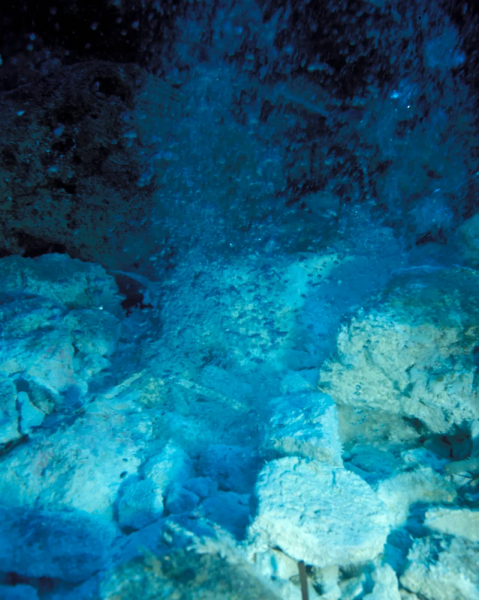
Gas bubbles rise deep beneath the waves from volcanic fissures, making their way through the earth's crust and water column
Worse, there will be little or no warning of this potential disaster. And this makes some scientists sound the alarm and insist on using the latest technology to track what is happening under the waves of the Mediterranean.
Ancient danger
Of course, Marsili cannot compete in size with, say, the Tamu massif, an extinct underwater volcano in the northwestern Pacific Ocean, 1600 km east of Japan, the largest known volcano on Earth, 4,460 m high.
However, unlike Tamu, Marsili is an active volcano. It is located close to the border of the Eurasian and African tectonic platforms, where geological activity is increased.
- Croatian villages as full of holes as Swiss cheese. How to live with it?
- Twelve eruptions in three weeks. How people live at the foot of Mount Etna
- Life on a volcano. What reconciles the Sicilians to the mortal danger looming over them
Marsili is one of many on an arc of volcanoes off the northern coast of Sicily and the western coast of southern Italy. The result of the activity of some of these volcanoes is the Aeolian (Lipar) Islands. And each of these islands has a dozen volcanoes hiding under water.
According to Guido Ventura, a volcanologist at the Italian National Institute of Geophysics and Volcanology, Marsili was born about a million years ago. Over the millennia, 80 active cones and many cracks have formed on it, from which lava can flow.
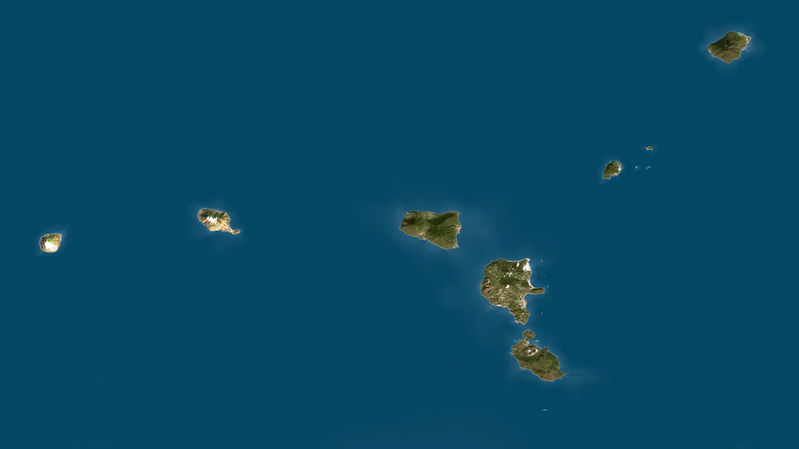
Aeolian Islands (archipelago off the northern coast of Sicily in the Tyrrhenian Sea) – the result of volcanic activity
Due to the fact that the volcano is deep under the waves, this time bomb was discovered only 100 years ago.
“It wasn't until the early 20th century that humans began mapping the seabed,” Ventura says.
As a result, in the 1920s, cartographers finally discovered this seamount. They named it after the Italian encyclopedic scholar Luigi Ferdinando Marsili (1658-1730).
However, detailed studies of the volcano began only in the 2000s. Scientists have discovered that the last of the Marsili eruptions happened several millennia ago.
Today's volcanic activity boils down to a faint underground hum, “grunting”, gas emissions and light tremors, Ventura says.
This, of course, does not preclude Marsili returning to life in a more dramatic form – perhaps he is just napping. If an eruption occurs again, lava and ash will be absorbed by the 500-meter water column – the likelihood that the fiery belch reaches the shores and harm the local population is extremely small.
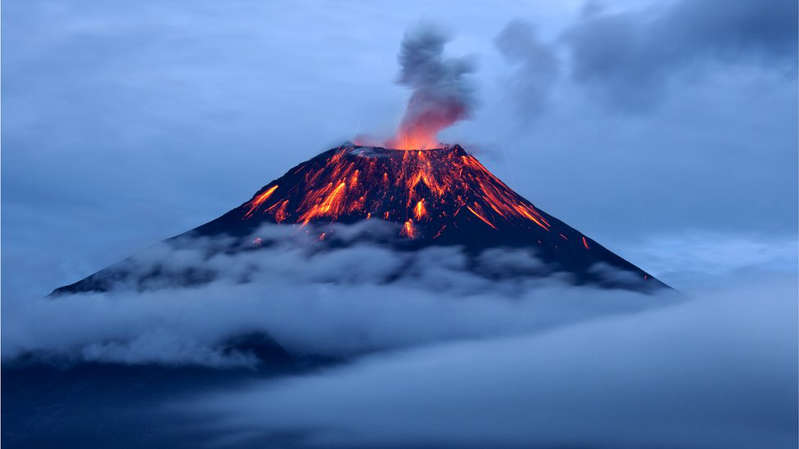
Volcanoes were named after the ancient Roman god of fire, Volcano (the picture shows the eruption of the Tungurahua volcano in Ecuador)
“The danger lies not in an eruption, but in possible underwater landslides,” Ventura emphasizes.
If seismic events or the eruption itself lead to the fact that one of the walls of the volcano collapses, this will lead to the movement of huge masses of water, which will cause a tsunami.
Destruction of Naples
We now know that the underwater landslides of the Aeolian chain of volcanoes could be the cause of the tragedies of the past.
For example, in 1343, the poet Petrarch described a terrible storm that literally devastated the coast of the Gulf of Naples, causing hundreds of deaths.
A recent study by Sarah Levy and her colleagues at State University of New York showed that the tragedy could have been the result of a tsunami. Scientists have found evidence of ancient landslides caused by the eruption of the Stromboli volcano.
The recent eruption of Stromboli (in 2002) resulted in two tsunamis. The waves then covered only the island of Stromboli itself, without reaching the mainland, no one died.
Unfortunately, we are not able to accurately calculate the degree of threat that Marsili is carrying. “We just don't have enough data to do this,” says Glauco Gallotti, a physicist at the University of Bologna. But we have every reason to believe that this volcano is dangerous, the scientist emphasizes.
First, continued hydrothermal activity could weaken the walls of the volcano. In addition, microearthquake recordings show that lava is still bubbling through the volcanic chamber, Gallotti says.
Based on this, we should consider the possible eruption in all seriousness and continue to study Marsili, the scientist said.
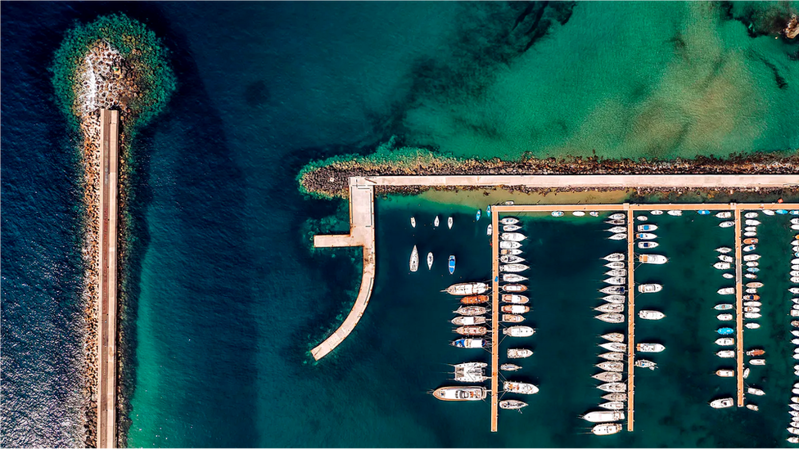
A landslide on the underwater slope of Marsili could cause a wave of 20 meters in height, which will hit the shores of the Gulf of Naples
In a study published earlier this year, a team of scientists led by Gallotti is looking at five different scenarios with the consequences of different types of landslides.
In the first two scenarios, the movement of water masses is minimal, which will give rise to a wave only a few centimeters high.
The collapse of the northwestern wall of the volcano, however, will lead to more serious consequences – a wave of 3-4 meters in height, which will reach the south of the Campania region, and a wave of 2-3 meters in height, which will reach Calabria and Sicily within half an hour.
- Tsunami Survivors: “I closed my eyes, prayed and prepared to die.”
Such scenarios must be taken seriously, as the “scars” on Marsili indicate that similar landslides have occurred in the past.
The worst-case scenario considers the collapse of the eastern wall of the seamount and the destruction of the central and southern portions of its summit.
According to Gallotti's calculations, this will lead to a wave of 20 m high, which will reach the shores of Sicily and Calabria in 20 minutes.
In order to assess the likelihood of this, further research is needed, the scientist emphasizes. “But we [yet] cannot reject the possibility of that,” he says.
If Marsili erupts, the humanitarian consequences will depend on the time of year, namely, when the tsunami happens, during the high tourist season or not.
“The summer in southern Italy is always full of people,” says Gallotti. Based on the height of the coast above sea level, it can be assumed that people will not be harmed if they stay about a kilometer from the coast.
Volcano Brothers
“It is clear that Marsili needs to be constantly monitored,” confirms Ventura. “Especially for possible instability of its slopes.”
As the events on Stromboli have shown, although Marsili is the largest active volcano in Europe, its brothers can also pose a threat.
“It should be borne in mind that there are at least 70 underwater volcanoes in the Tyrrhenian Sea, the past of which, in some cases, we do not know anything at all,” emphasizes Guido Ventura.
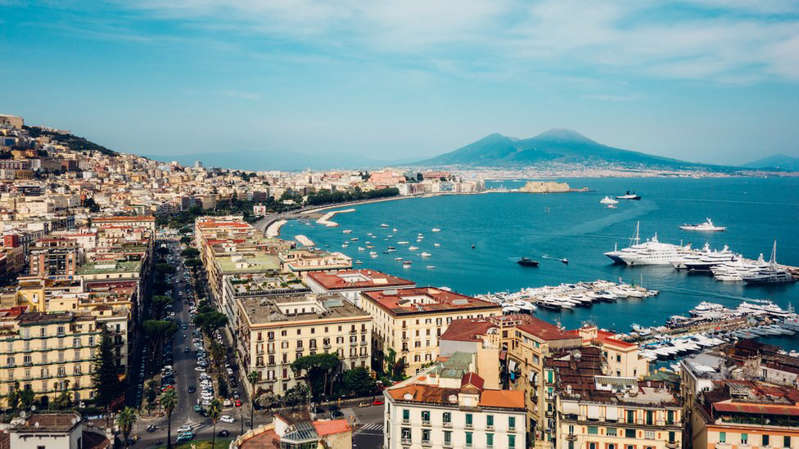
Damage from a possible tsunami caused by the collapse of the Marsili summit will depend on whether it occurs during the height of the tourist season and whether the wave reaches the major cities
In particular, the volcano Palinuro, 65 km from the coast of Cilento (province of Salerno), is of concern. According to Gallotti, recent studies show that this volcanic complex is covered with a 150-meter layer of loose, free-flowing material that can easily be moved by seismic activity. More research is needed to understand the structure of the volcano and assess the chances of its collapse.
If the risk is high, then the Italian government may have to take proactive measures to avoid disaster.
At the moment in Italy there is no reliable system of warning the population about the impending tsunami.
But it is not difficult to create it, Gallotti is sure. The motion-sensing buoy system is capable of detecting the signatures of an impending tsunami. People in those regions that are in danger will receive SMS notifications, and they will have time to leave before the wave comes.
In addition to the early warning system, Gallotti would like more awareness of the potential danger – both in society at large and among politicians.
He cites a study by Teresita Gravina of the University of Guglielmo Marconi (Italy) and Nicola Marie of the University of Glasgow (in Scotland) that assessed the understanding of tsunami risk in southern Italy.
In general, people know that a tsunami can happen in their region, but this knowledge is vague. For example, when asked what they remember about such events, only 3.3% mentioned the 2002 Stromboli tsunami.
The majority perceived themselves as poorly informed, with limited ideas about what are the causes of the tsunami and how to behave in the event of a threat.
However, one cannot fail to note some positive steps: for example, recently in Salerno, the Italian Department of Civil Defense organized a kind of exercise, simulating a tsunami emergency. “It has helped the population better understand the risk,” Gravina and Marie say.
But the majority still do not understand well how they can be threatened by something happening in the depths of the sea. The danger of a tsunami seems to be something distant, but if this still happens, any knowledge, any skill can save thousands of lives.

Alessia Franco is a writer and journalist covering history and culture.
David Robson is the author of The Intelligence Trap: Why Smart People Make Dumb Mistakes. His new work, The Expectation Effect: How Your Mindset Can Change Your Life, is due out in early 2022.

